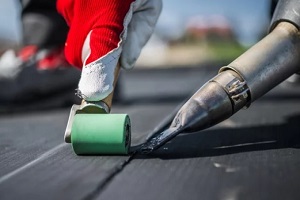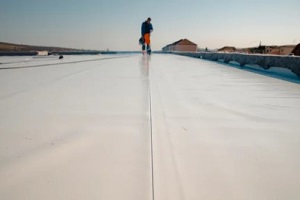 Commercial buildings benefit from heightened care and attention to function their best for years. Because of the fluctuations in weather common in the state, buildings bear the brunt of the burden.
Commercial buildings benefit from heightened care and attention to function their best for years. Because of the fluctuations in weather common in the state, buildings bear the brunt of the burden.
Snow contracts the building’s many essential joints and structural materials, and then they expand during summer heat. Over time, such reactions can degrade a building and make it susceptible to the intrusion of water—which only worsens the problem. However, Delaware commercial waterproofing can help.
Waterproofing strategies have evolved, with the last decade being especially productive. Now more than ever, industry-leading experts have access to more effective, more affordable waterproofing options than ever.
Here is an overview of the future of Delaware commercial waterproofing and the innovative technologies and techniques that can reimagine how your building copes with moisture going forward.
Nanocoatings Using Ceramics
Waterproofing a commercial building is essential; keeping out the moisture prevents gradually worsening cracks, mold problems, and temperature wicking that may cost you more on your utility bills. Nanotechnology is one of the newest and most innovative methods to achieve comprehensive waterproofing.
When people think of ceramic, they often envision bowls and mugs—which may seem fragile and easy to break. However, when ceramics are broken down to microscopic levels, they are extremely hydrophobic (they resist water completely).
Nanocoatings that incorporate ceramic can be applied to building structures to insert these waterproof particles into areas of vulnerability, creating an impermeable shield that rejects moisture, corrosion, chemicals, and UV damage.
 In addition to preventing water damage in your commercial structure, Delaware companies that rely on nanocoatings tend to see cleaner structures, as the smooth ceramic particles repel moisture and oils. These are two of the most common factors that create smudges and provide a breeding ground for visually unappealing growths.
In addition to preventing water damage in your commercial structure, Delaware companies that rely on nanocoatings tend to see cleaner structures, as the smooth ceramic particles repel moisture and oils. These are two of the most common factors that create smudges and provide a breeding ground for visually unappealing growths.
Inherently Waterproof Concrete
Waterproofing becomes even simpler for buildings that are still in the planning stages before construction. Rather than applying coatings or sprays to existing materials, consider building your structure using inherently waterproof materials.
While concrete is a strong material, it is susceptible to water damage over time. However, a new type of concrete has been developed with a slight change in its molecular composition.
This allows the concrete to repel water naturally rather than relying on a coating or other amendment. This also means that if your concrete is damaged by something such as an accidental impact, any scuffs or missing chunks will still be waterproof because the material is hydrophobic.
Self-Healing Coatings
One of the biggest challenges with waterproofing is that if a section of your building is damaged, any existing coatings may have been compromised. This issue is eliminated with a new type of waterproofing developed by the University of Michigan.
Coming in the form of a spray coating, this water-repellant combination is more than 100 times more durable than most existing options and is highly flexible.
It can even be used on clothes and other porous materials to ensure a water-tight seal. Perhaps best of all, it is self-healing—which means that if damage occurs, the coating will fuse back together to create an impenetrable barrier without the need for extensive repair and reapplication.
Hydrophobic Crystalline Waterproofing
Many commercial buildings struggle with moisture issues because of the molecular structure of the materials they are made out of. When a water droplet comes into contact with another material, it may wick into that material if the angle of the molecules is conducive to it; think of it like most materials making an easy bridge at the molecular level down which water may pass without effort.
The capillaries in the human body work the same way, facilitating easy blood flow because of their shape. Using this knowledge, it is possible to create waterproof materials by changing the molecular angles so they no longer make these bridges. This is what crystalline waterproofing does.
By utilizing sharp angles of at least 150 degrees, crystalline waterproofing prevents moisture droplets from being able to use capillary action to travel into a material; instead, they roll off. For concrete, this makes its porous surface impenetrable to water.
Get Comprehensive Delaware Commercial Waterproofing from Cutting Edge Installers
Waterproofing has come a long way in the last decade, and new and exciting strategies are in the works. The experts at Waterproof Caulking & Restoration stay on top of industry developments so that they can offer the latest and most effective options customized for your structure.
Contact Waterproof Caulking & Restoration to discuss your waterproofing concerns and learn about the strategies that would be most effective for your specific commercial structure in Delaware.
